Rame Head
OS Grid ref:- SX434502
The spectacular and dramatic coastal headland of Rame Head is known in Cornish as Penn an Hordh and lies to the southwest of the village of Rame in southeast Cornwall. The headland was once referred to as Pen den har, which is understood to derive from the Cornish meaning fortified rock promontory or headland. The current name of Rame Head was recorded as Ramyshed in the fifteenth century, which derivation is uncertain but possibly refers to the headland's resemblance to the head of a ram.
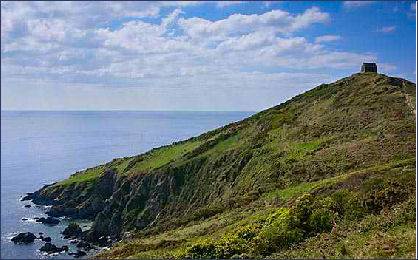
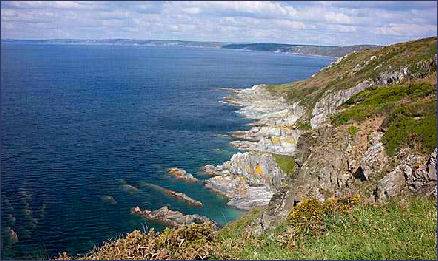
Rame Head is a part of Mount Edgcumbe Country Park which is jointly owned and run by Cornwall Council and Plymouth City Council. The headland forms part of Rame Head and Whitsand Bay SSSI (Site of Special Scientific Interest), noted for its geological as well as biological interest. The SSSI contains two species on the Red Data Book of rare and endangered plant species, early meadow-grass (poa infirma) and slender bird's-foot-trefoil. Panoramic views are to be had from the summit, to the west along Whitesand Bay and east towards Plymouth Sound. 400 feet high cliffs slope into the sea while Dartmoor ponies graze around the head. The area is also inhabited by deer. There is a National Coastwatch look-out station at the head which is staffed by volunteers.
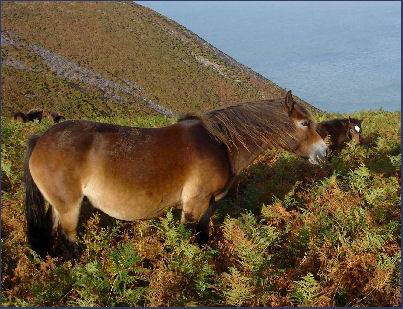
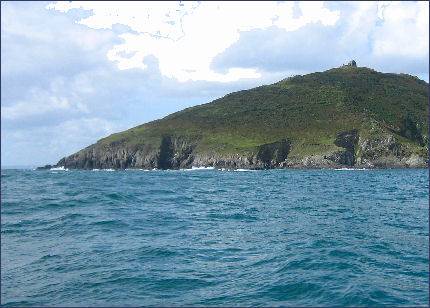
Flint tools uneathed in the vicinity of the headland indicate that the area has been occupied from as far back as the Stone Age. A promontory hill fort once occupied the site in the Iron Age, which is referred to as Rame Head cliff castle. The ramparts of the fort are still discernable although the bank is very overgrown and the ditch has partially silted up.
The summit of the headland has a medieval chapel which is reached via a steep footpath and is directly on the South West Coastal Path. In common with many hilltop churches, Rame Head Chapel was dedicated to St Michael the Archangel. Its location on a high cliff rendered the chapel a perfect for observing the western approaches to Plymouth Sound, and a resident priest/watchman once slept in a small upper chamber to keep watch along the coast for approaching vessels, igniting a bonfire to act as a warning beacon. During the attempted invasion by the Spanish Armada in 1588 two watchmen were paid to keep a look out for Spanish ships sailing along the coast.
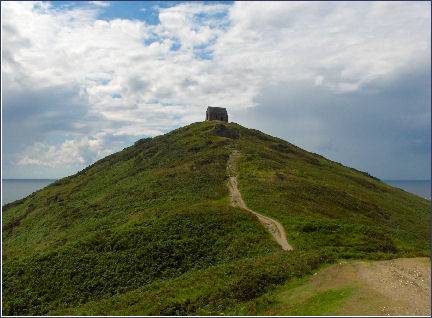
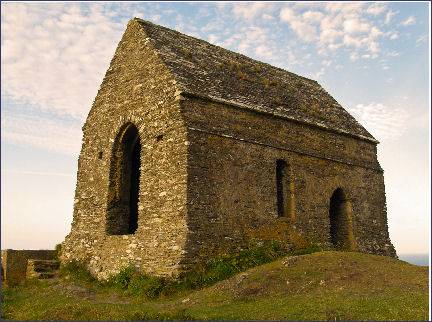
The small simple chapel is a single-cell rectangular building, constructed of slate and granite rubble, it has a single door on the north side and single-lancet windows with a large east window which overlooks the coast towards Plymouth. The structure still retains an impressive barrel vaulted stone roof. The interior has no discernable decoration save for a small ledge beside the east window, the floor consists of earth and rock. Restoration of the chapel was carried out in 1882 for William Henry, IVth Earl of Mount Edgcumbe.
The chapel was first licensed for Mass in 1397 and is probably occupies the site of a former Celtic hermitage. Its structure remains intact. Earl Ordulf, who once owned vast estates in the West Country and was the uncle of the Saxon king Ethelred 'the Redeless', granted Rame to Tavistock Abbey in 981, meaning the parish was technically in Devon until the modern era.